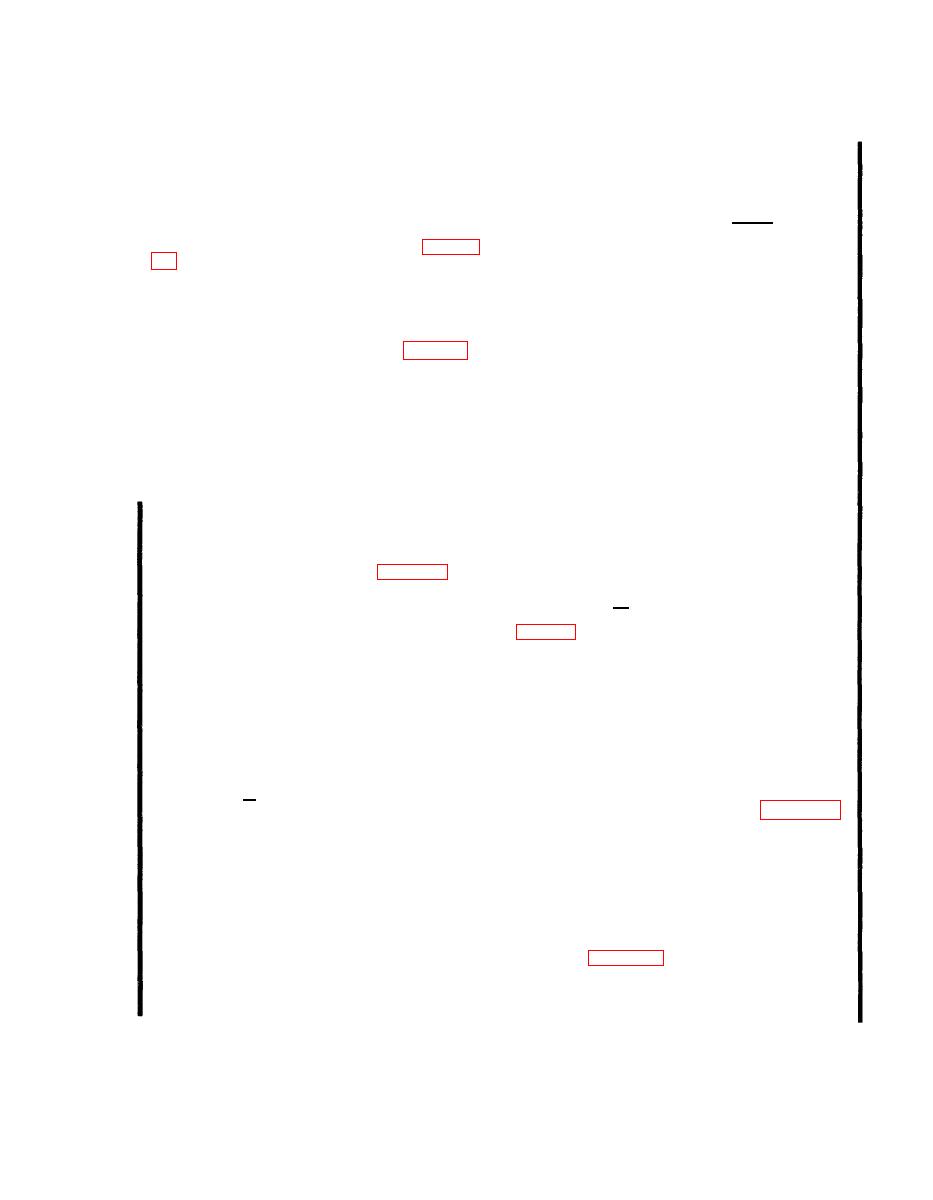
TM 9-1375-213-12
NOTE
CAUTION
Alternate method No. 2 is more appli-
AN OVERHAND KNOT IN A SINGLE
cable to short, rather than long, detonat-
P A S S OF DETONATING CORD
ing cord branch lines or primers.
THROUGH
THE
DETONATING
CORD TUNNEL WILL N O T GIVE
ASSURED DETONATION OF THE
NEW 40-LB CRATERING CHARGE.
(d) Alternate method No. 2 (C, fig. 2-
A ULI KNOT (WITH A MINIMUM OF
wrap cord around charge and loop four times.
TEN TURNS) MUST BE TIED
Pull running end through eye of loop and
TIGHTLY
IN
THE
END
OF
thighten. This method is also initiated by an elec-
DETONATING CORD USED FOR
tric or nonelectric system,
PRIMING THE CHARGE AND THE
KNOT MUST BE
BENT TO
CONFORM WITH THE SHAPE OF
Using 20- to 24-inch length of detonating cord,
T H E BOOSTER AND KEPT IN
form a Uli knot using a minimum of 6 wraps.
TIGHT CONTACT WITH SURFACE
This knot is equivalent to the power output of 3
OF THE CHARGE OVER THE
to 4 blasting caps. Tape knot tightly to demoli-
BOOSTER.
tion charge to be detonated, When using demoli-
tion charge M2 (tetrytol), center Uli knot over
NOTE
tetryl booster, 2 1/2 inches from end of block
and tape in place. Use electric or nonelectric sys-
Where detonating cord or time fuse is
tem to detonate charge.
being used with a cratering charge to
be lowered into a hole, use a piece of
wide tape (e.g. 2 in, wide PPP-T-60
(f) Additional priming procedures
for the new (1992) 40 lb cratering charge.
tape) to secure cord/fuse to top of
Because the booster is placed at the top of the
charge. This will prevent kinking of
charge in the new cratering charge, the priming
the fuse/cord where it exits the priming
tunnels are now located there (see fig. 2-25. 1).
tunnel.
2 . Detonationg cord priming of
NOTE
the new charge requires use of of Uli knot (see
The new charge is a bit more sensitive
to impact damage than the old one. A
face of the charge and bent so it is close to the
severe drop could crack the explosive
internal, centered, 3 1/2 inch diameter A-5
and possibly cause a partial functioning
booster. Pass the free end of the detonating
when the charge is initiated. For this
cord through the smaller priming tunnel from
reason, the new charge should be kept
the outside edge and pull about two feet of cord
in its protective metal shipping con-
through the tunnel. Tie a tight Uli knot with
tainer until it is as close to the point of
at least ten turns in this end of the cord and
deployment as practicable.
pull the cord back through the tunnel to secure
the knot against the clip. Bend the knot so it
curves with the round shape of the booster
1. Blasting cap priming is basi-
beneath the surface and position it flat against
cally the same as done with the older version
the top surface of the charge (see fig. 2-25.2).
charge. Place the cap in the longer, closed-end
Secure the knot to the surface of the charge
tunnel and secure it by wrapping the wires (elec-
with tape (e.g. PPP-T-60), Some other method
tric cap) around the wire-securing post or tap-
such as use of a piece of twine, wire or rubber
i n g down the detonating cord or fuse
band is required at temperatures below 40F or
if the surface of the charge is damp. Securely
(nonelectric cap). If tape is not available or will
not adhere because the charge is damp or cold,
tie the twine, etc. between the far end of the
wrap a piece of twine wrapped around the
handle bracket (beneath the bent end of the lift-
fuse/cord and the wire-securing post, but do
ing handle) and the securing post and the loop
NOT tie it too tightly around time fuse - it
in the end of the Uli knot to hold the knot on
could snuff out the burning of the fuse, Use sev-
place (see fig. 2-25.2). The knot MUST be kept
eral wraps of twine around the cord/fuse to get
in tight contact with the charge to function prop-
a secure grip without squeezing it too tightly.
erly.
Change 15 2-22.1

